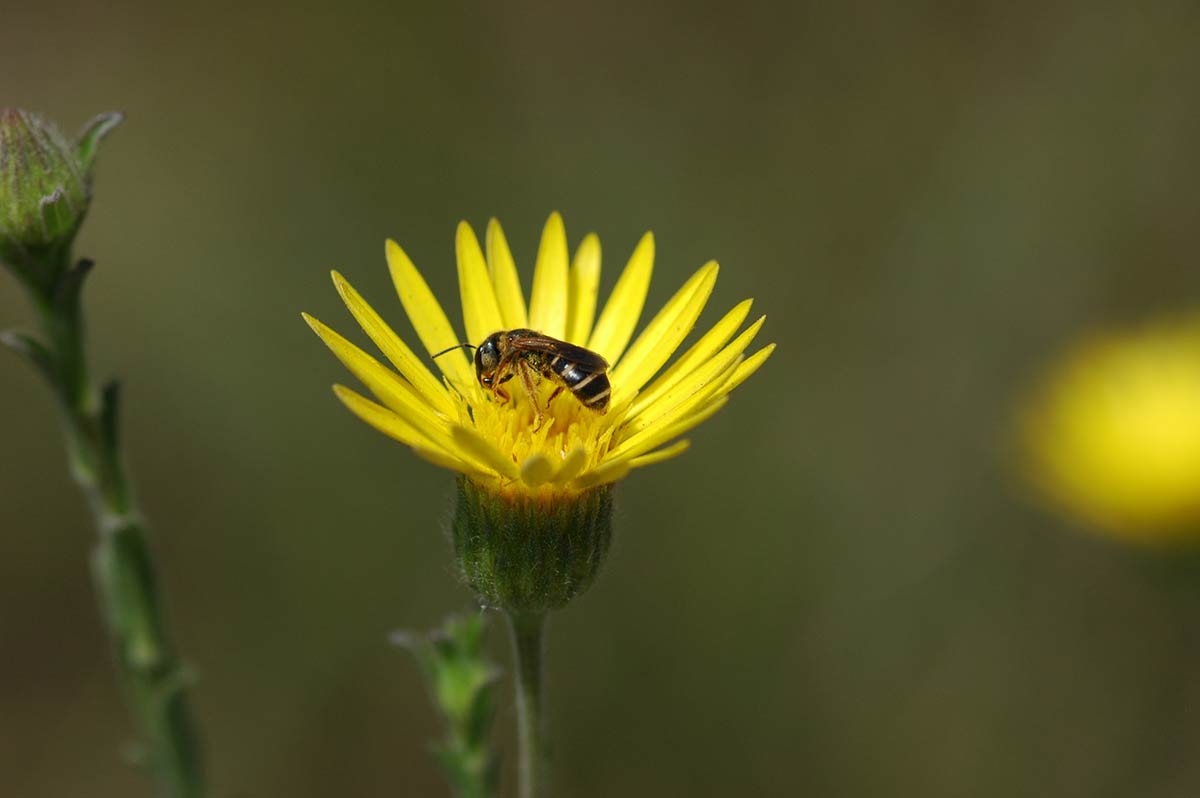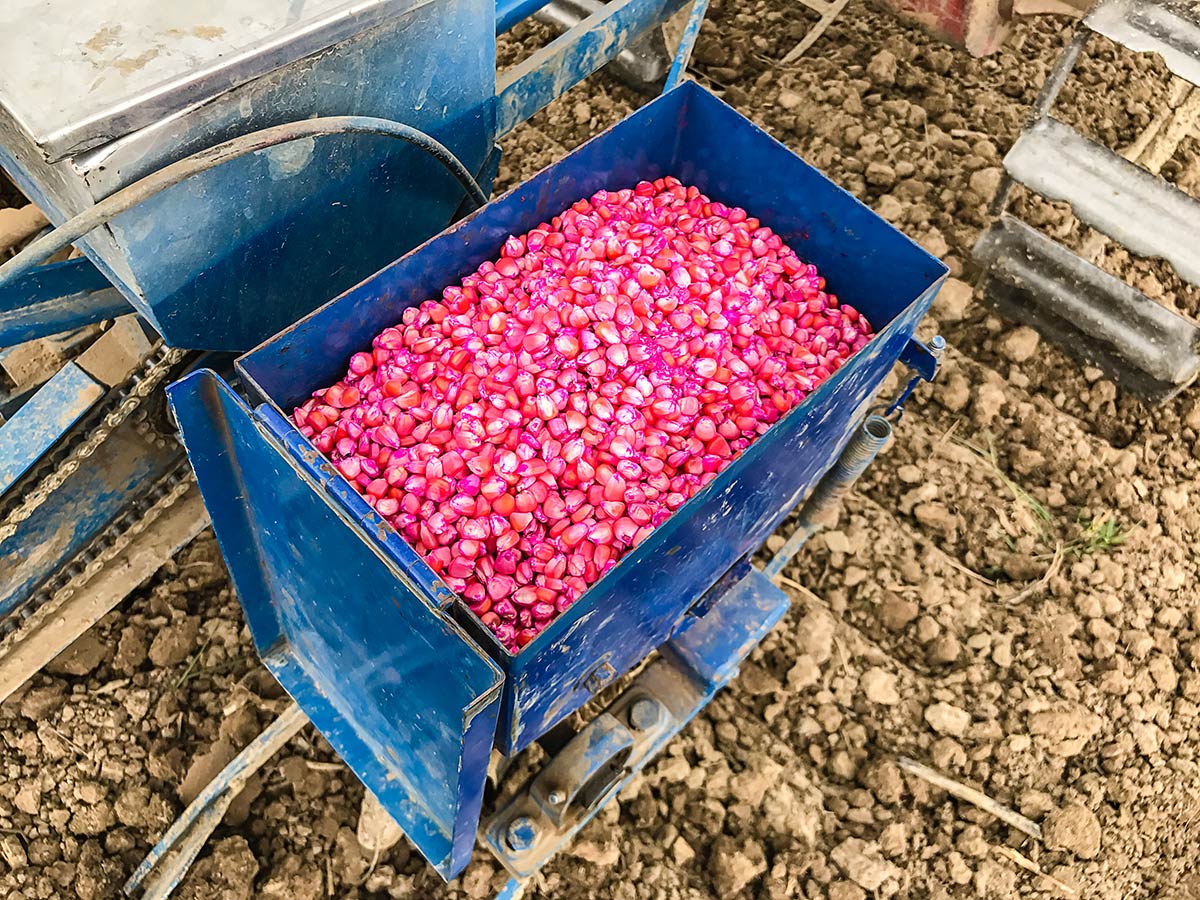If you consider yourself a fan of bees, butterflies, and other pollinators, then you’ve likely heard before that pesticides can be a problem. But how big of a problem are they, really? Doesn’t the Environmental Protection Agency (EPA) screen pesticides for their toxicity to bees? Aren’t registered pesticides safe for pollinators, as long as the directions on the pesticide label are followed? In a word, no.
Here are four key gaps in pesticide regulation that undermine the protection of pollinators.
1. Bees are exposed to many pesticides in their lifetime, but we only screen for single chemicals
Pollinating insects face greater challenges from pesticides today than they did even 20 years ago. Over the past two decades, while the overall volume of insecticide use has decreased, the toxicity to honey bees of the pesticides we use has surged, largely due to increased use of neonicotinoid and pyrethroid insecticides. However, pesticide registration and review in the United States focuses on screening risk on a chemical-by-chemical basis and fails to account for the many combined exposures that pollinators face in the real world.
For bees, exposure to a complex cocktail of pesticides while out seeking pollen, nectar, and nesting sites is common. Just like pharmaceuticals can have unexpected side effects in the human body, the diverse array of pesticides encountered by bees may introduce a variety of side effects. Unfortunately for bees, these effects are not thoroughly assessed before the chemicals are released for use or listed out neatly on a warning label. In agricultural areas, where many crops receive a wide mix of treatments over the season, studies have detected upwards of 50 to 60 pesticides in bee-collected pollen, with multiple detections in each sample. Assessing pesticide risk only on a chemical by chemical basis is likely to underestimate the impacts of combined and cumulative exposures to pesticides.

2. Pesticide-coated seeds have limited oversight, but make up a substantial portion of US pesticide use
Seed coatings, exempted from EPA reporting requirements, contribute significantly to insecticide use across millions of US acres with limited oversight. Insecticide treated seed is planted on over 150 million acres of cropland in the US. In some states, like Vermont, neonicotinoid seed treatments are the largest single contributor to total insecticide use. The lack of data on seed coating use since 2014 makes it challenging for scientists to accurately assess landscape-scale risks of pesticides.
To address this regulatory blind spot, the EPA needs to reevaluate their seed treatment regulation and improve oversight. The EPA is open for public comments on this issue through February 9, 2024. Xerces has previously shared more information on treated seeds and our recommendations on key points to include in your comments to EPA.

3. Pesticide testing doesn’t include many “sublethal” effects—like fewer offspring or unsuccessful nesting or foraging—that can cause species declines over time
Risk assessment for pollinators relies heavily on an initial toxicity test that looks for the dose of the pesticide that kills 50% of the test population of adult honey bees (the LD50). This “well, did it die?” test is a crude screen that does not capture longer-term fitness impacts of pesticide exposure, such as fewer offspring, skewed sex ratio, disrupted foraging or nesting, and lower overwintering success.
One recent study found that mason bees exposed to a neonicotinoid insecticide as larvae or as adults have fewer total offspring, and fewer females among the offspring they do produce. Sex ratio is important for understanding population growth, as it’s not just about how many babies are produced, it’s about how those babies contribute to the population in future years.
Here’s another example of impacts not captured by laboratory-based toxicity tests: when squash bees were exposed to a squash crop that had been treated with a soil-applied neonicotinoid, they initiated 85% fewer nests, left 5.3 times more pollen unharvested, and produced 89% fewer offspring than untreated controls. Our regulatory framework needs to evolve beyond short-term toxicity screens to better capture the complex ecological impacts of pesticides.

4. Only European honey bees are used for pesticide regulatory testing, leaving out other sensitive insect species like monarch butterflies
Did you know the European honey bee is the standard test organism for screening toxicity of pesticides to all terrestrial insects? We don’t have a standard butterfly species for screening pesticides. Some species or groups of insects may be more or less sensitive than the honey bee to certain pesticides.
As one example, honey bees appear to be more susceptible to neonicotinoid insecticides than monarch butterflies, but on the flip side, monarchs are extremely sensitive to chlorantraniliprole, another kind of systemic insecticide with more than 100 labeled uses, including as a seed treatment and a granular lawn grub treatment. Recognizing differences in species sensitivities is vital for understanding pesticide impacts.

More regulation could protect pollinators
These are not the only gaps in our understanding of pesticide risks. Pesticides are not ‘proven safe’ through the registration process – there are many potential impacts that are not assessed. In the face of so many uncertainties, Xerces takes a precautionary approach to pesticides in our conservation work, rather than assuming approved pesticides are safe for invertebrates. We hope that in the future, pesticide regulation can evolve to better address the multifaceted impacts of these chemicals, as the current system fails to ensure the continued well-being of our pollinators.




